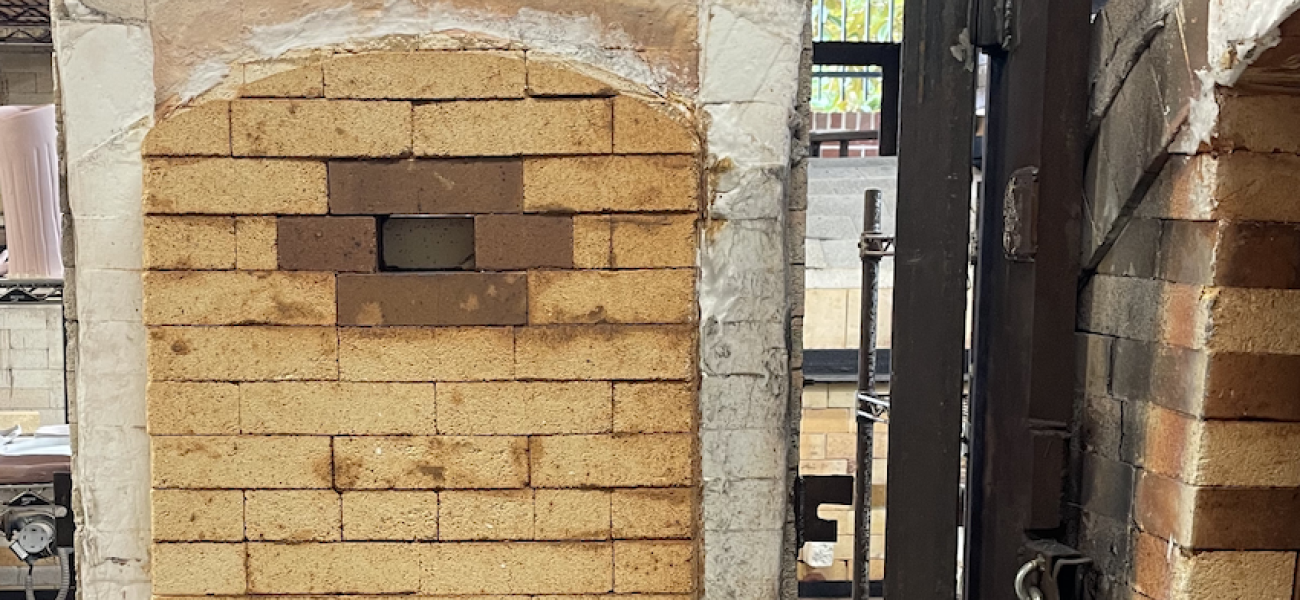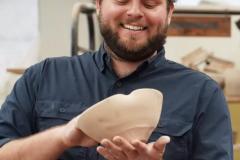As the studio technician for the University of Mississippi, maintenance of kilns and equipment is a constant part of my daily routine. The studio is fortunate to have a number of gas kilns close to the teaching space and graduate studios. The kiln pad holds five hard brick kilns and two raku kilns, all of which run off of natural gas. Students are instructed through every part of the firing, from engaging the gas to reading pressure and the ins and outs of forced air burners. To make things more efficient, almost all our kilns have been designed or adapted with swinging doors, with the exception of our salt kiln. Having a swinging door on kilns is the optimal choice for large studios, as it enhances efficiency by streamlining the loading and unloading process, minimizes heat loss during firings, and contributes to the overall functionality and longevity of kiln design. This essay will compare the value of a swinging kiln door to a traditional brick-up door, highlighting the efficiency and practicality of the swinging door design in a studio setting. Additionally, it will outline the step-by-step process of converting a brick-up door into a swinging door, demonstrating the benefits in terms of time, energy conservation, and ease of use.
Swinging Doors vs. Brick-Up
In terms of hard brick kilns in an academic setting, there are several arguments for maintaining a brick-up door design. Diversifying the types of kilns used supports a well-rounded knowledge of kiln building and firing. Some potters prefer the tactile and traditional aspect of working with a brick-up door, aligning with historical kiln firing methods that emphasize craftsmanship in every aspect of the process. The brick-up door allows for a highly customizable seal, which can be beneficial in ensuring even heat distribution and preventing heat loss during firing, especially for atmospheric firings like wood, salt, or soda firing. A brick-up door tends to be less expensive to construct initially, as it does not require the additional hardware and design considerations of a swinging door.
However, the benefits and convenience of a swinging door cannot be ignored. Unlike a brick-up door, which requires time-consuming assembly and disassembly with each firing, a swinging door can be opened and closed in seconds, making it much more efficient for frequent firings. The time cleaning door bricks is eliminated, and the wear of stacking bricks against the walls is mainly removed. Handling and placing refractory bricks for a brick-up door can be physically demanding, particularly for larger kilns. A swinging door eliminates this repetitive task, reducing strain on studio technicians and students.


